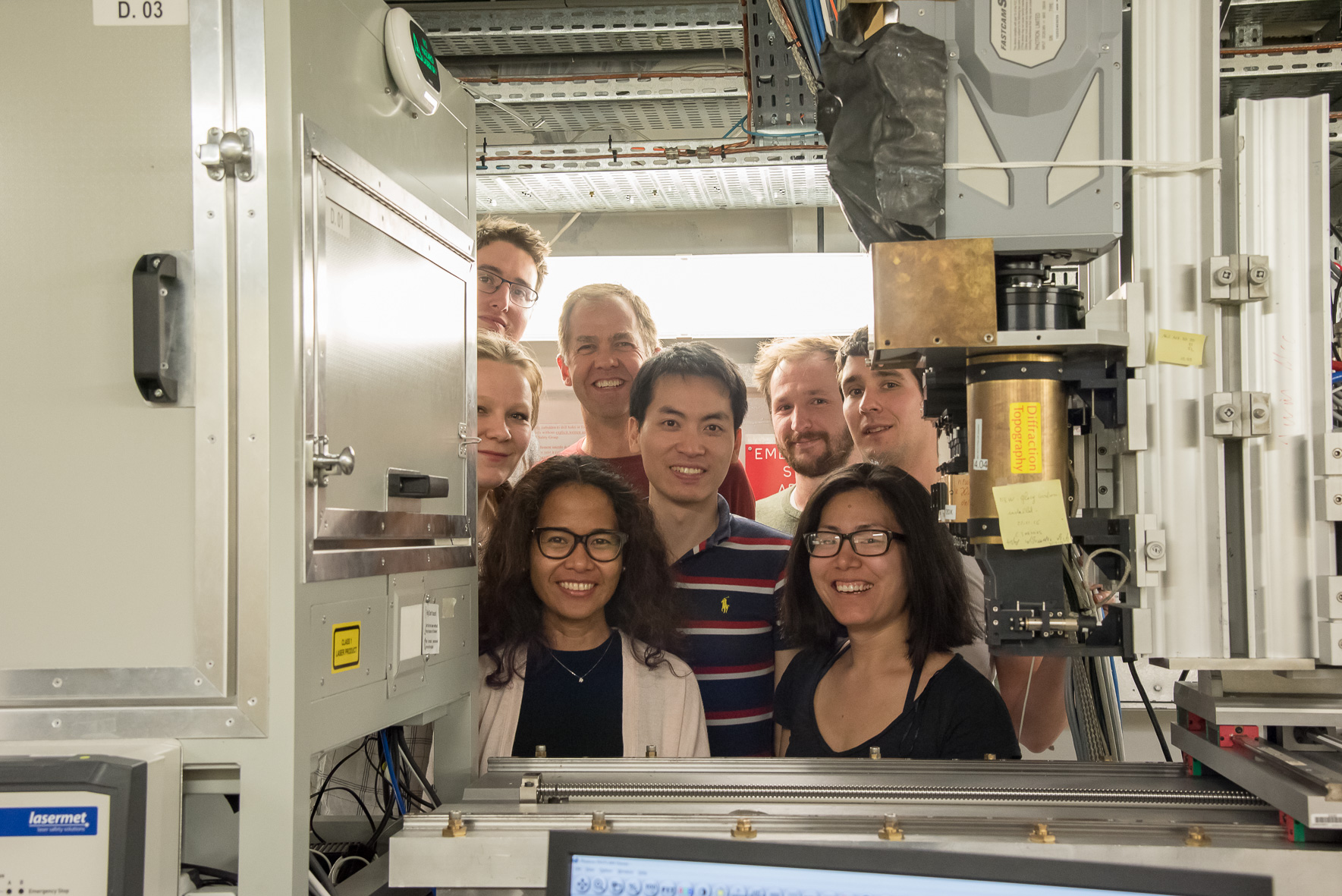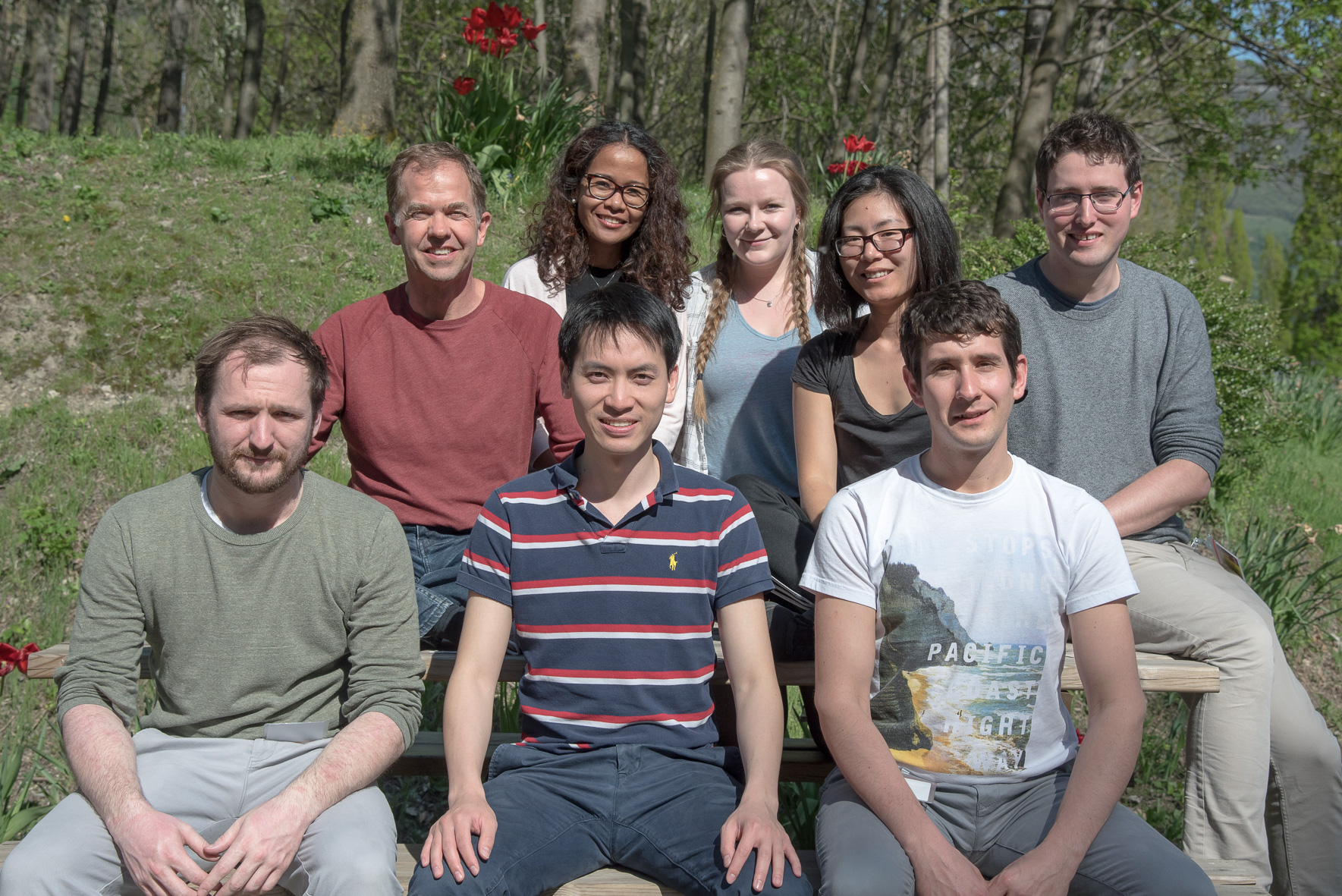- Home
- News
- General News
- Taking additive...
Taking additive manufacturing’s heart beat #weekendusers
21-05-2018
Additive manufacturing, or 3D printing, builds objects by adding layers and it is emerging as a more flexible and reliable way of manufacturing complex structures in the aerospace, engineering and biomedical industries. A British team is at the ESRF’s ID19 to see into the heart of the process and understand it.
Share
“I would not want to ship this equipment on an aeroplane”, Chu Lun Alex Leung said, scientist from the University of Manchester. “It was too precious to leave it in the hands of third parties”, he added. Instead of coming to the ESRF by aeroplane, Leung and his colleagues endured the 12-hour drive in a rental van all the way from Oxfordshire (UK) to the ESRF to make sure their unique equipment arrived safely.
Leung was referring to the laser additive manufacturing (LAM) process replicator, or LAMPR for short, a machine himself and colleagues at the Research Complex at Harwell have developed that 3D prints polymers, metals and ceramics while ESRF’s X-rays probe the heart of the process – the melting and solidification of powders to form complex 3D printed components.
 |
|
The team on the beamline, next to the laser additive manufacturing (LAM) process replicator. Front row: Margie P. Olbinado, Yunhui Chen. Back row: Sam Tammas-Williams, Lorna Sinclair, Peter D. Lee, Chu lun alex Leung, Samuel Clark, Sebastian Marussi. Credits: C.Argoud. |
Additive Manufacturing is the technology that builds 3D objects by adding powdered material one layer at a time to form almost any object, regardless of its complexity. AM is particularly attractive for building complex shapes that otherwise would have to be fabricated from many separate components. It is also highly effective for repairing regions of damaged components. Applications range from aerospace, where the shapes are both complex and high value, to making bespoke medical components tailored to each individual patient. In the case of LAM, it produces solid objects via an extremely fast laser-powder interaction.
“Only with the high flux and high energy X-rays at ESRF we can obtain the speed and penetration to see inside of components as they are being fabricated from nickel superalloys. The conversion of the powder to solid component happens in milliseconds,” Peter Lee explained, Physical Sciences Director at the Research Complex at Harwell and professor at University College London. “ID19’s ultra-high-speed imaging is ideal for this study on nickel and titanium-based alloys due to its high photon flux and excellent phase contrast. The results are both giving us new insights into the physics controlling the process, how the microstructures are formed, and providing unique data to validate process models”, Lee added. “The ESRF operates world-wide unique high-energy beamlines, ideally suited to study fast processes in dense materials with high temporal resolution, such as during AM. Our new EBS light source will further boost our capabilities to ensure they remain world-leading,” states Alexander Rack, beamline scientist at ID19.
The team has already successfully tested the first generation of the LAMPR at the Diamond Light Source. Since then, they have upgraded the machine: “This machine is unique as it can see not only inside a laser spot, like our competitors. We can actually monitor what happens in each layer when the powder is melted to form a melt track, in addition, seeing how the melt tracks interact with each other as the object is being built”, Leung explained. The LAMPR is also capable to produce 3D objects with a volume of 25 x 25 x 25 mm3.
The X-ray imaging is coupled with concurrent high speed infra-red microscopy developed at the the University of Sheffield and an ultra-fast optical imaging provided by Oxford Lasers Ltd. Using these two imaging modalities, they hope to translate the insights gained using X-ray imaging at ESRF’s ID19 beamline into control algorithms that will optimise the industrial AM process.
Industrial applications
The results of this experiment will not only benefit the academic community but also industry. The breadth and depth of the possible applications of additive manufacturing is so large that the team are using as many as 15 industrially-relevant materials in their tests, including steel, titanium or bioactive glass. The research is part of the EPSRC’s future manufacturing hub on Manufacture using Advanced Powder Processes (MAPP www.mapp.ac.uk), with 17 different industrial collaborators, ranging from AM machine manufacturers to aerospace companies. MAPP’s aims to provide powder-based manufacturing with low energy, low cost, and low waste high-value manufacturing routes and products.
Ben Saunders, Team Leader at Rolls-Royce for Materials and Process Modelling, explains why they are collaborating in the project: “Additive Manufacturing, although simple in principle, is actually an incredibly complex process where the solidification and subsequent multiple heating cycles interact with phase transformations and residual stress. From an industrial standpoint we need to have a deep mechanistic understanding of both the manufacturing process and what the relationship between process parameters and the durability of the parts in service. In situ synchrotron studies are helping us to develop the mechanistic understanding of these relationships, which are simply not observable in any other way, and also provide invaluable data for validating physics-based simulations which allow us to scale up this understanding to industrially relevant problems.”
 |
|
The team outside ID19. Front row: Samuel Clark, Chu lun alex Leung, Sebastian Marussi. Back row: Peter D. Lee, Margie P. Olbinado, Lorna Sinclair, Yunhui Chen, Sam Tammas-Williams. Credits: C. Argoud. |
Text by Montserrat Capellas Espuny
Top image: A partial view of an ESS ring of vanes. Each of the large aerofoils were produced by additive manufacture in a Titanium alloy and then welded together into the ring assembly. This assembly flew on the first Trent XWB-97k flying test bed engine. Credits: Rolls Royce.



